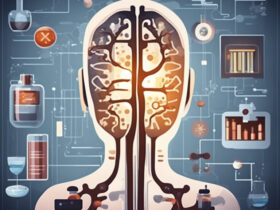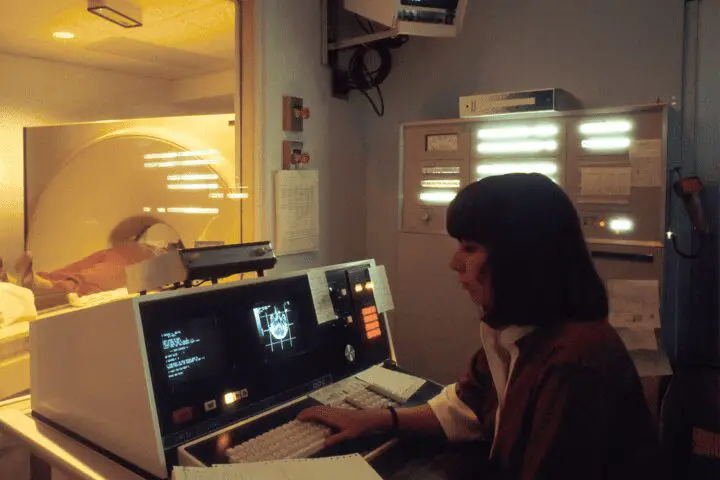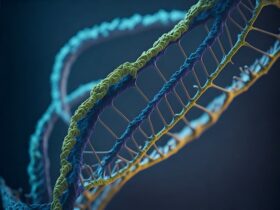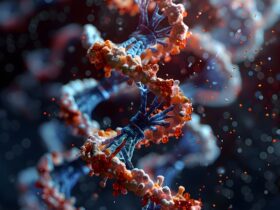- Sponsored -
- Sponsored -
The integration of artificial intelligence (AI) into medical diagnosis is a groundbreaking development that is poised to transform the healthcare industry. AI has the potential to revolutionize disease detection and diagnosis, making healthcare more accurate, efficient, and accessible. In this comprehensive exploration, we will delve into the profound impact of AI in medical diagnosis, elucidating the technologies, methods, and real-world applications that are reshaping healthcare. From image analysis to predictive modeling, AI is set to reshape the medical diagnosis landscape, ultimately enhancing patient outcomes, and saving lives.
The Necessity of AI in Medical Diagnosis
Medical diagnosis is a complex process that often relies on human expertise. However, human diagnosis can be prone to errors, variations in interpretation, and limitations in processing extensive medical data. AI, with its capacity to analyze large datasets, recognize patterns, and provide rapid insights, addresses these challenges and enhances the accuracy and efficiency of medical diagnosis.
Key Technologies and Approaches
- Machine Learning (ML): ML is a subset of AI that enables systems to learn and improve from experience without explicit programming. In medical diagnosis, ML algorithms can analyze patient data and medical images to identify patterns associated with various diseases. For example, ML models can distinguish between benign and malignant tumors in medical images.
- Deep Learning: Deep learning, a subfield of ML, focuses on artificial neural networks. Convolutional Neural Networks (CNNs), a type of deep learning architecture, are particularly effective in image analysis tasks. They have played a pivotal role in diagnosing conditions like diabetic retinopathy from retinal images and detecting cancer from mammograms.
- Natural Language Processing (NLP): NLP enables computers to understand and generate human language. In medical diagnosis, NLP can extract valuable information from clinical notes, electronic health records (EHRs), and medical literature. This technology aids in automated medical coding, risk factor identification, and patient history extraction.
- Predictive Modeling: Predictive models use historical patient data to forecast future health outcomes. These models assist in early disease detection, risk assessment, and treatment planning. For instance, predictive models can identify individuals at high risk of developing diabetes based on lifestyle and genetic factors.
- Computer Vision: Computer vision enables machines to interpret and understand visual information from the world, making it crucial in medical imaging. AI-powered computer vision systems can detect abnormalities in X-rays, MRIs, CT scans, and other medical images, aiding in the diagnosis of conditions like fractures, tumors, and cardiovascular diseases.
Applications of AI in Medical Diagnosis
- Radiology and Imaging: AI has made significant advancements in radiology, especially in the interpretation of medical images. AI algorithms assist radiologists by highlighting abnormalities, segmenting organs, and even detecting early signs of diseases such as cancer and Alzheimer’s in brain scans.
- Pathology: In pathology, AI supports pathologists in analyzing tissue samples more efficiently. AI algorithms can detect cancerous cells in biopsy samples, identify specific types of cancer, and assess tumor aggressiveness.
- Cardiology: AI is utilized in cardiology to analyze electrocardiograms (ECGs) and detect irregular heart rhythms. It can also predict cardiovascular events by analyzing patient data, including blood pressure, cholesterol levels, and lifestyle factors.
- Dermatology: AI-powered dermatology tools aid in diagnosing skin conditions and detecting skin cancer. By analyzing images of skin lesions, these tools provide rapid assessments and recommendations for further evaluation.
- Ophthalmology: AI is transforming ophthalmology by aiding in the early detection of eye diseases such as diabetic retinopathy and glaucoma. AI systems analyze retinal images and flag patients at risk for vision loss.
- Genomic Medicine: AI analyzes genomic data to identify genetic factors contributing to diseases. This information is used for personalized treatment plans and risk assessments.
- Infectious Disease Diagnosis: AI-driven algorithms analyze clinical data and patient symptoms to assist in diagnosing infectious diseases. For example, AI models predict the spread of diseases like COVID-19.
- Mental Health: AI-based chatbots and virtual mental health assistants screen individuals for mental health conditions and provide support. These tools offer early intervention and reduce the stigma associated with seeking mental health care.
Benefits of AI in Medical Diagnosis
- Enhanced Accuracy: AI algorithms analyze extensive datasets and identify subtle patterns that may be missed by human diagnosticians. This leads to more accurate and timely diagnoses.
- Efficiency: AI automates time-consuming tasks, such as data analysis and image interpretation, allowing healthcare professionals to focus on patient care. This improves workflow efficiency and reduces diagnostic delays.
- Early Detection: AI identifies disease markers at an early stage, increasing the chances of successful treatment and improved patient outcomes.
- Personalized Medicine: AI analyzes individual patient data to tailor treatment plans based on genetic, lifestyle, and environmental factors. This approach improves treatment effectiveness and reduces adverse effects.
- Reduced Healthcare Costs: By streamlining diagnosis and treatment, AI helps reduce healthcare costs associated with unnecessary tests, delayed diagnoses, and incorrect treatments.
- Accessibility: AI-driven diagnostic tools can be accessed remotely, bridging geographical gaps and ensuring that patients in underserved areas receive timely diagnoses and care.
- Continuous Monitoring: AI-powered wearable devices continuously monitor patients’ health, providing real-time data to healthcare providers and enabling proactive interventions.
Challenges and Considerations
While AI offers immense promise in medical diagnosis, several challenges and considerations must be addressed:
- Data Quality: AI relies on high-quality data for training and validation. Ensuring the accuracy and completeness of medical datasets is essential for the reliability of AI models.
- Regulatory Compliance: AI-based medical devices and diagnostic tools must comply with rigorous regulatory standards to ensure safety and efficacy.
- Interoperability: Integration of AI systems with existing healthcare IT infrastructure, including EHRs, is crucial for seamless adoption.
- Ethical and Privacy Concerns: Patient data privacy and ethical use of AI in healthcare are paramount. Robust security measures and ethical guidelines must be in place.
- Human Oversight: While AI can assist in diagnosis, human expertise remains essential for final decision-making and patient communication.
- Training and Education: Healthcare professionals require training to effectively use AI tools and interpret their results.
The Future of AI in Medical Diagnosis
The future of AI in medical diagnosis is exceptionally promising. Advancements in AI technologies, combined with the accumulation of extensive medical data, will lead to even more accurate and efficient diagnostic tools. AI will continue to play a crucial role in early disease detection, personalized medicine, and improving patient outcomes.
As AI in medical diagnosis becomes more widespread, it will enhance the capabilities of healthcare professionals, reduce diagnostic errors, and ultimately save lives. The collaborative efforts of researchers, healthcare providers, regulators, and technology companies will drive the continued evolution of AI in healthcare, making it an indispensable tool in the diagnosis and treatment of diseases.
- Sponsored -
- Sponsored -

























[…] Artificial Intelligence Integration: Robotic surgical systems may become increasingly integrated with artificial intelligence (AI). AI can offer real-time decision support to surgeons, identify anomalies, and enhance surgical outcomes. […]
[…] The Importance of Big Data in Healthcare […]
Thank you for sharing superb informations. Your website is very cool. I’m impressed by the details that you have on this web site. It reveals how nicely you understand this subject. Bookmarked this website page, will come back for more articles. You, my friend, ROCK! I found just the info I already searched everywhere and simply could not come across. What an ideal web-site.
Howdy would you mind letting me know which webhost you’re working with? I’ve loaded your blog in 3 different web browsers and I must say this blog loads a lot faster then most. Can you suggest a good web hosting provider at a honest price? Thank you, I appreciate it!
I’m really enjoying the design and layout of your blog. It’s a very easy on the eyes which makes it much more enjoyable for me to come here and visit more often. Did you hire out a designer to create your theme? Great work!